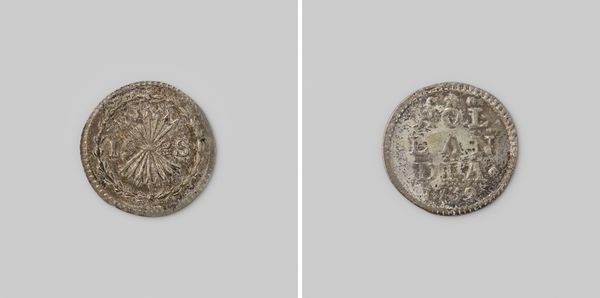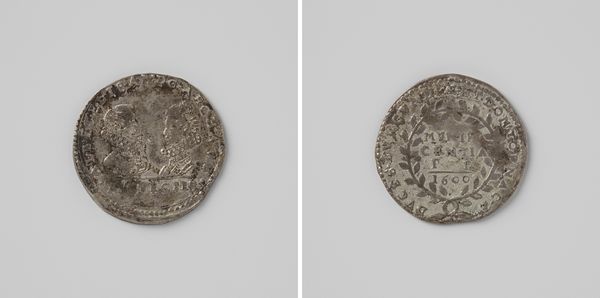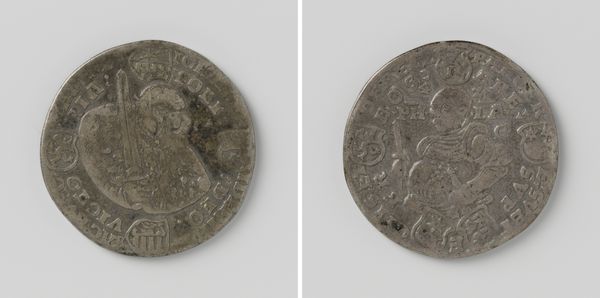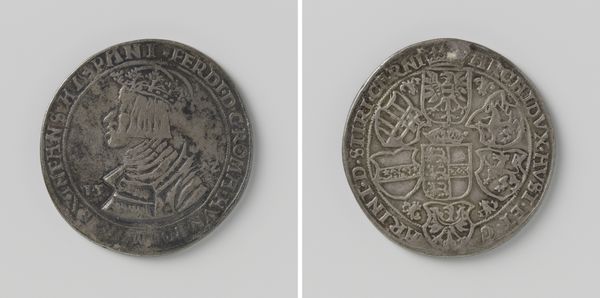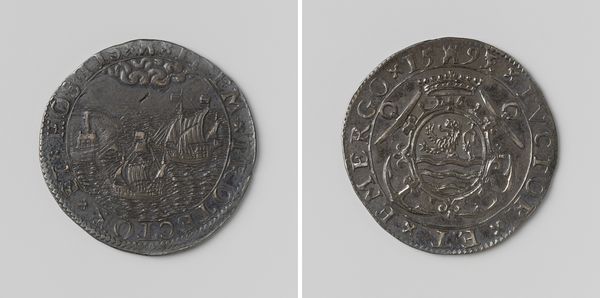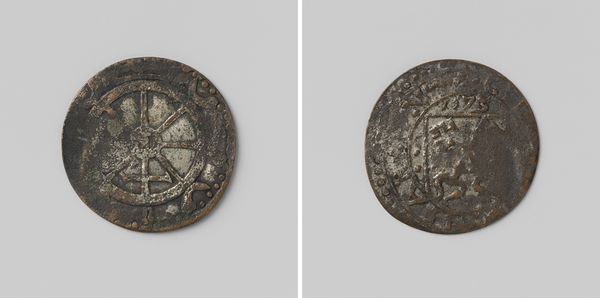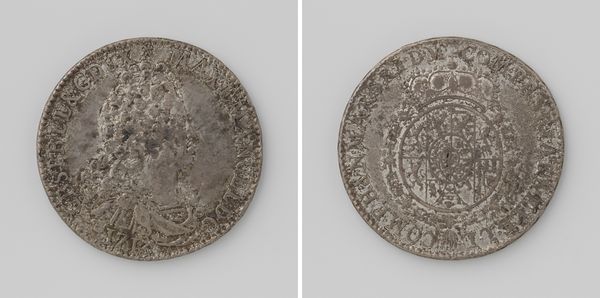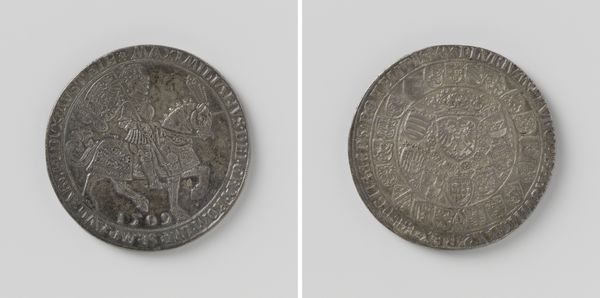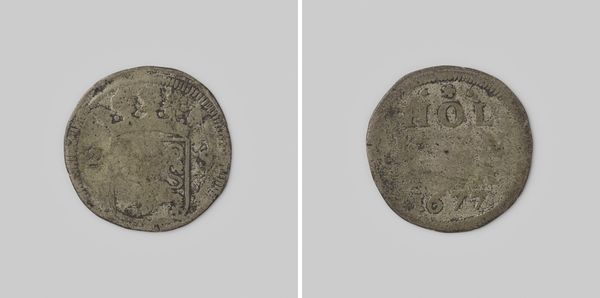
metal
#
metal
#
sculpture
#
ancient-mediterranean
Dimensions: diameter 2.5 cm, weight 2.98 gr
Copyright: Rijks Museum: Open Domain
This silver 'Hollandse leicesterstoter' was made in 1586 by the Province of Holland. Its creation occurred during the early years of the Dutch Revolt, when the provinces of the Low Countries were in open rebellion against Habsburg Spanish rule. The coin's imagery tells us about this historical moment. The coat of arms of Holland on one side and a stylized image of a lion, a traditional symbol of the Netherlands, on the other, served to assert the province's identity and independence during a period of conflict and nation-building. Coins like these weren’t just currency; they were also tools for propaganda. To understand the full story of this coin, we need to investigate the economic and political conditions of the time. Numismatic collections, historical archives, and scholarly research can provide valuable insights into the meaning and use of this object within its original social context. Through such investigations, we can begin to appreciate how even something as small as a coin can reflect the social and political forces shaping its creation.
Comments
No comments
Be the first to comment and join the conversation on the ultimate creative platform.


